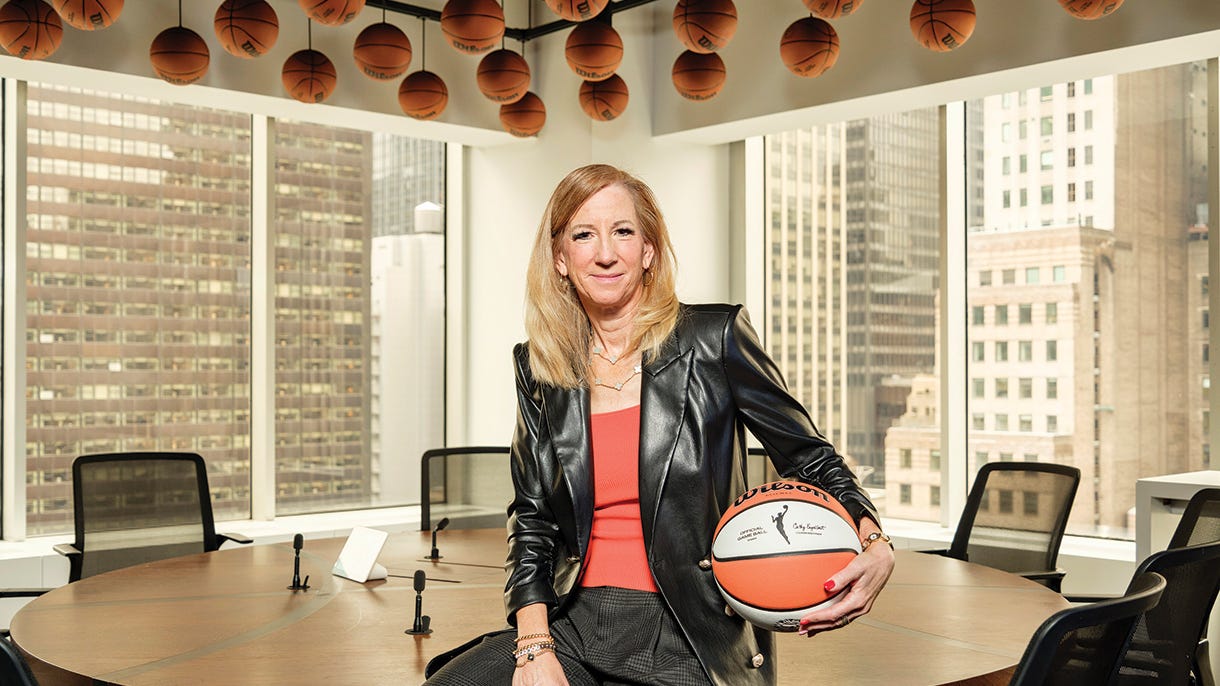WNBA Commissioner Congratulates Herself on WNBA's Recent Success
Cathy Engelbert presents WNBA, not Clark, as main driver of WNBA boom
This will be my last WNBA/Clark article for at least a few weeks. I think.
With Caitlin Clark getting injured, costing the WNBA vast sums of money, I was prepared to leave this league alone for awhile. I’m very interested in the Nike angle, but that league is in such a repetitive cycle of Earth 2 insanity leading to conservative backlash that it all feels tired at times.
But, just when I was thought I was out, they pull me back in! A subscriber sent me this funny example of WNBA self congratulation, penned by commissioner Cathy Engelbert in the Harvard Business Review for the magazine’s May/June issue. It deserves a soft FJM treatment.
The piece is for the magazine’s “How We Did It” feature and it’s titled, “The Commissioner of the WNBA on Transforming the League Ahead of a Breakout Season.” You hear that, people? You might think it was Caitlin Clark who gave the WNBA a massive revitalization in 2024. Turns out it was Engelbert and she’s here to tell us all about it. I’m reminded of Warriors owner Joe Lacob telling the New York Times, “It’s not just Steph Curry,” back in 2016. Engelbert wants us to know that her efforts have the WNBA light-years ahead.
BY NEARLY EVERY METRIC, 2024 was a standout year for the Women’s National Basketball Association (WNBA). As transcendent rookies Caitlin Clark, Angel Reese, and Cameron Brink entered the league, regular-season games drew an average of 1.2 million viewers, up 170% from the previous season, and our All-Star Game brought in an all-time high of 3.4 million, triple that of 2023’s event.
Caitlin Clark will be mentioned a total of twice in Engelbert’s article, both times followed by “Angel Reese,” as though Clark has an especially long last name. As an aside, is it WNBA-subversive that Engelbert mentions the attractive blonde Cameron Brink here as well? The number 2 pick of 2024 played only 15 games before suffering an ACL tear, but contributed buzz to the league with promotional activities like making Shohei Ohtani look like the happiest man in Los Angeles.
We're still a long way from matching the multibillion-dollar professional men's leagues that have dominated televised sports for a century in the United States. But last season was a turning point for the WNBA. Many ask when I knew it would be. I suspected it might be from the day we put tickets on sale for our April 15 Draft; they sold out in minutes. I felt it could be the night of that event, alongside a thousand cheering in-person fans with 3 million ESPN viewers watching from home (a far cry from my first draft as commissioner from my living room during the pandemic), and again the next morning, when, as I was boarding a flight, the flight attendant said, "I saw you on TV last night!" And I knew with certainty that we had entered a new era when the New York Liberty's mascot, Ellie the Elephant, was featured in Vogue and went on to become a viral social media sensation during the team's march to a 3-2 win in the WNBA Finals, which also broke attendance and TV ratings records.
I sense there’s an elephant in the room here and her name isn’t Ellie.
I wonder why the 2024 WNBA Draft tickets sold out in minutes and 3 million ESPN viewers tuned in. Unmentioned in the article is that 1.25 million ESPN viewers watched the 2025 WNBA Draft a year later. That’s great by historic WNBA standards, but also represents a massive drop off from last year for…reasons.
To new followers and outside observers, our organization's success might seem overnight, and even lucky—propelled by a singularly exceptional group of college players coming to the WNBA at a time when the public has finally developed an appreciation for women's basketball. However, we could not have capitalized on those advantages without years of hard work and preparation.


